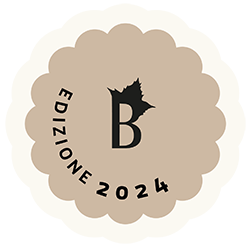From the Mediterranean mother goddesses to the legend Maria Incantada, fairy of the Nuraghe, the story of Meana Sardo leads us into a story full of charm.
Date back to the Middle Neolithic the three beautiful little statues, found in area Polu, depicting the Mediterranean mother goddess with an obese figure, symbol of prosperity.
The territory retains many evidences from the nuragic age: there are nuraghi with a single tower from the Middle Bronze age (1660-1330 BC), and also multi tower nuraghi from the more recent bronze age (1300-1100 BC). The last phase belongs to the nuraghi Nolza, Su Nuraxi and Maria Incantada to which it binds the legend of jana (fairy) in love. According to the folk tale Maria Incantada (or Cantada) lived in the nuraghe, and while weaving on the loom with gold thread, was singing with a melodious voice to her lover who was in Su Cùccuru de Nolza, in the homonymous nuraghe, held captive by a giant who guarded a great treasure.
The earliest historical villages are dated back to the Roman age: witnesses of the time are the remains of the village of Polcilis and the important road Per Mediterranean, linking Cagliari to Olbia, across the island. The few remains of the churches of St. Elena and St. Elia prove the use of the area during the Byzantine age.
In the condaghe of Santa Maria of Bonarcado, of the XII century, you’ll find the first appearance of the name of the village that was part of the court of Arborea, and was capital of the parish of Barbargia di Meana.
After the fall of the district, the lordship Barbagia Belvì, which included the village of Meana, was included in the royal domain. The various attempts to entrust the village to various feudal lords ended with the return to the revenue authorities. The inhabitants, in fact, repeatedly rebelled against the imposition of heavy feudal taxes. Finally, in 1507, the Meanesi got the privilege to be administered by one of their fellow countryman.
With the passage of the kingdom of Sardinia to the house of Savoy the town, who had managed to get rid of the Spanish overlords, met feudal yoke under the county of Salvatore Lostia which had gained infeudation of the civil incomes of Barbagia Belvì. Meana was able to break free from the feudal lords in 1839.
In 1862 the country's name was changed to Meana Sardo to differentiate the town from a small town of the same name in Piedmont.
In an area of forests, hills and springs, winding paths lead to the discovery of beautiful views and the natural beauties of the territory of Meana Sardo. The vineyards covering the hills surround the town donating colors and scents.
From the tip of Bruncu Sant’Elia, at 1083 m, you can enjoy a sweeping view of the mountains of Gennargentu and deep valleys carved by rivers. The main river is rio Araxisi that marks the border with Atzara. Strolling along its many tributaries, one can stumble upon one of the sources of fresh water used by the population.
Fascinating mountain landscapes, witnesses of different geological ages, have originated local legends: according to the tales, the great limestone boulders of Ortuabis (ortu de abis “bees orchad”) would be petrified hives because of a terrible curse placed upon the owner as a result of his greed.
Oaks and Cork Oaks live in the woods municipal Su Cumunali and Su Melone surrounded by the typical plants of the Mediterranean vegetation: olive, strawberry, broom, mastic, myrtle, cistus and heather.
In the mountains, where numerous Geotritone and Euprotto Sardo live, you can still see the ancient stone used by sheperds as shelters, ispinnazzus, witnesses of tradition and Indicators of the large role of the farms in the economy.
Along the main street there is the parish church of St. Bartholomeo. The first testimonies of its existence, date back to the XIV century but there is no trace of evidence left.
The current layout dates back, in fact, to the XVI century. In the background of the simple and austere façade stands the remarkable portal surmounted by a particular square window in which the same elements are repeated in Gothic style. The bell tower to the right of the facade, completed in 1673, boasts beautiful friezes on the balustrade made of trachyte.
Walking on the hills around the village, one can encounter the ancient shepherds’ shelters, ispinnazzus, formed by a circular stone base and a roof of branches supported by a cone-shaped wooden frame.
On a hill, a few kilometers from the village, you can visit the rural church of San Lussorio rebuilt in 1858 after being desecrated and abandoned in 1673. Nearby there are numerous examples of megalithic civilization: more than 10 nuraghi are known throughout the territory meanese. Near the church of San Lussorio are the visitable Domus de Janas (the Early Bronze Age) and the Nuraghe of multiple towers Maria Incantada in which, according to an ancient legend, lived a jana (fairy) in love, Maria Incantada (or Cantada) that wove on a golden loom using gold threads and with a melodious voice, sang to her lover held captive by a giant who guarded a great treasure in Su Cùccuru de Nolza. Right here, on the highest point of the plateau Su Pranu, lies one of the most well known nuraghe Nolza. It consists of a central tower and four corner towers linked by ramparts. This magnificent building preserved from the Bronze Age is in the centre a height of 13 meters. All around are the remains of the villaggio nuragico that extends to approximately 2.5 acres.
One of the most interesting archaeological finds dates back to the ancient culture of Abealzu (2480-2000 BC): a menhir armed statue that represents a warrior with a sledgehammer of war.



